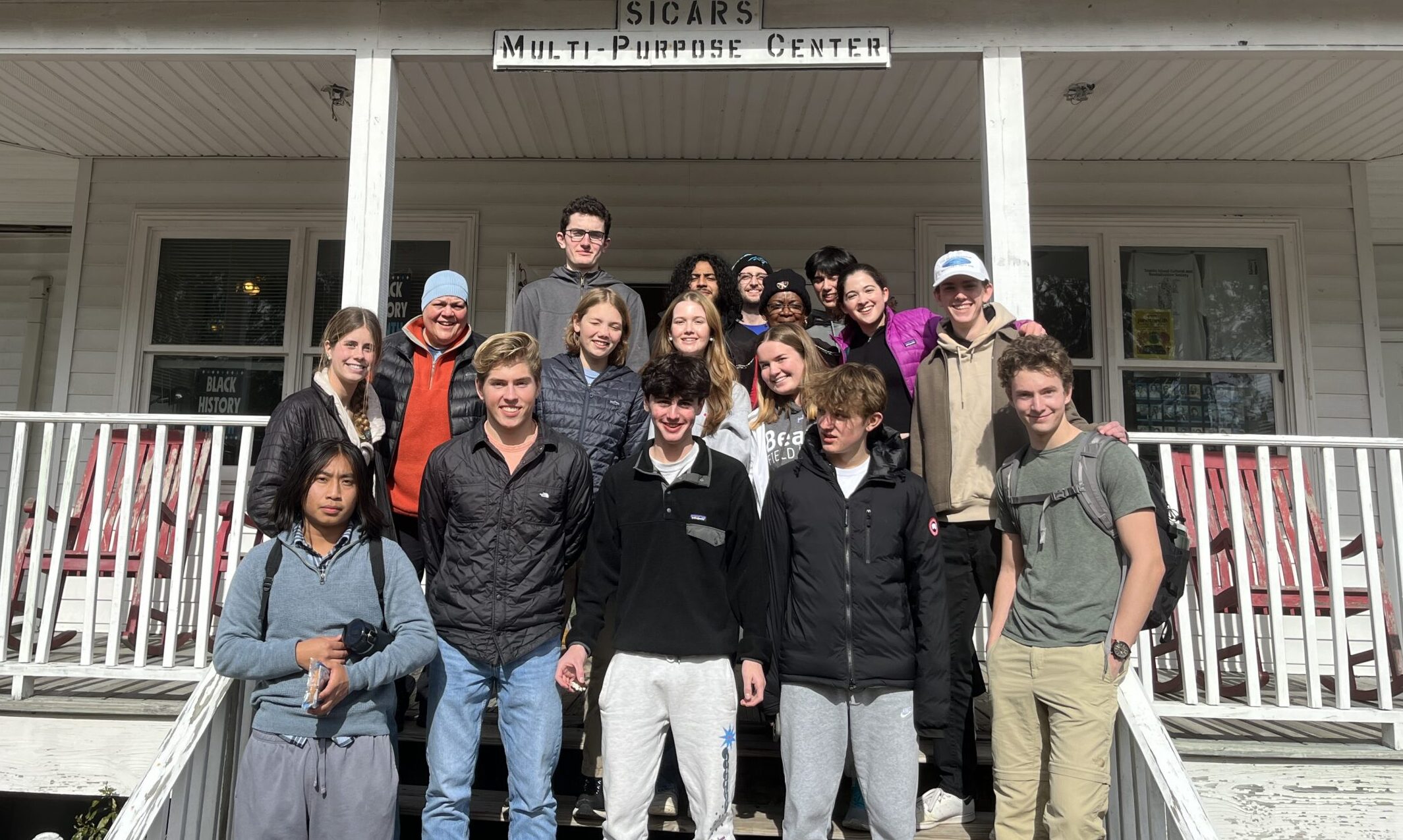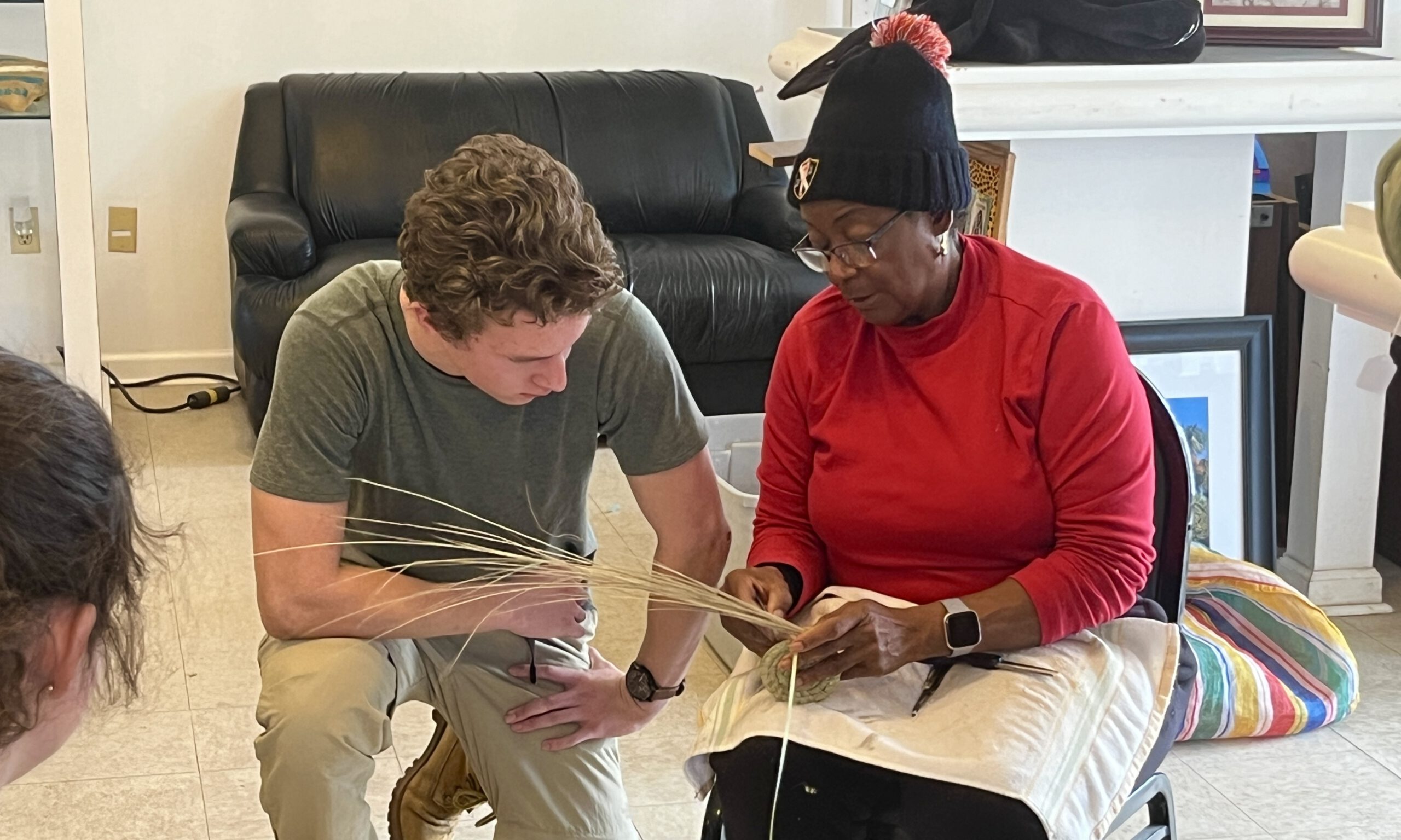Class: Urbanism + The Built Environment (BVR-X)
Grade: Upper School
Teacher: Yolanda Wilcox González
Students in the BVR-X course Urbanism + the Built Environment traveled to Savannah, GA during the winter term for an immersive week-long experience. Students investigated the local built environment, heard from locals, and participated in ethnographic research. The experience was designed for students to develop a deeper understanding of the major concepts and themes explored in the course, including the role of cities in shaping the ecological and cultural systems around us.

Yolanda Wilcox González partnered with Christen Higgins Clougherty, Founder and Executive Director of the Nobis Project, to design the immersive experience in Georgia. A major emphasis was placed on having local experts, historians, and descendants of the Gullah-Geechee guide the experience, offering up first-hand accounts that challenged preconceived notions and shed light on lesser-known histories. A few of the major essential questions students were asked to consider include:
- How can cities be designed and developed to minimize their environmental impact, promote resource efficiency, and enhance resilience to natural disasters and climate change?
- What role do socioeconomic factors play in shaping the urban landscape, and how can urban planning address issues of inequality?
- In what ways do historical events and cultural influences shape the architecture and layout of cities?

While in Savannah, it became clear to students how the built environment can reveal and conceal history. For example, students learned more about the city’s use of forced labor of the enslaved population by identifying various symbols hidden in the ironwork of Savannah’s historic district. During a visit to The Beach Institute African American Cultural Center, a guide shared the memory of his great-grandfather, a jockey that protected himself and his horse from the Civil War by hiding out on a local island. He noted that there are multiple Black Kentucky Derby winners that are never featured on the Kentucky Derby’s website. Stories like these resonated most with students, as they directly connected the past with the present in a deeply personal way.
All of the different perspectives and untold stories and narratives are what come to mind when I think of this experience.
-Helen Jaques ’24

The concept of familial connection to land continued during the class’ visit to Sapelo Island. In order to dive deeper into the language, culture, social relationships, food availability, land use, and habits of Sapelo Island’s 28 residents, a tour was hosted by Jazz, a direct descendant of the Gullah-Geechee people, who were enslaved Africans brought to Sapelo in the early 1800’s. Jazz pointed to how issues such as climate change can be seen on the island, with poor drainage and unmaintained infrastructure impacting the community. Access to public transportation was also a topic of discussion; if school-aged residents of the island participate in after school activities on the mainland, they end up missing the ferry back home. Through Jazz’s tour and students’ assessments of Sapelo Island, it became clear how a built environment can systemically disadvantage those that depend on it.
Something that stands out to me was going to Sapelo Island and meeting people there. We had done research but meeting them in person gave more depth and emotion than a video or reading ever could. Also, seeing the impact of the land laws and how they negatively affect people was very impactful.
-Henry Davidson ’26
Additional activities on the class’ itinerary included a tour of the Pin Point Heritage Museum, a sweetgrass basket weaving demonstration, an indigo dyeing workshop, and some free time at the beach. Each of these activities allowed students to fully engage in ethnographic research while immersing themselves in local culture, history, and traditions.
Reflecting upon these experiences was an ongoing process for the class. Students recounted what they saw and considered how they felt by journaling, connecting with one another, and debriefing in group conversations that were built into each day’s schedule. Through sharing meals and reflections, the Urbanism + the Built Environment class developed a sense of community that became instrumental in processing the entire experience.

Upon arriving back at Beaver, students used their experiences in Georgia as a lens to view similar issues at home. The class began work on a final assignment that tasked them with engaging in the design process to conceptualize a local built environment. Throughout the project, students pulled from conversations held in Georgia regarding infrastructure, greenery in urban settings, climate change, and more. Once finished, the class displayed their work to an audience of parents, caregivers, and peers. An urban planner from an architectural firm was also in attendance, providing feedback on the work done by students.
A big part of the immersive experience was to inspire us and teach us about different urban issues and how to solve them. Had we not gone, it would be a lot harder to understand how to identify those problems around us
-Finn Ruddy ’24

This course emphasized place-based learning through an immersive experience to foster deeper learning and provide students with personal involvement in the learning process. This experience allowed our students to investigate real-world challenges, connect with experts, actively engage in the learning process, foster social awareness and responsibility, engage in citizenship, and provide students agency as they address contemporary issues.
-Yolanda Wilcox González
To see more photos of students’ work from Urbanism + the Built Environment, click here.